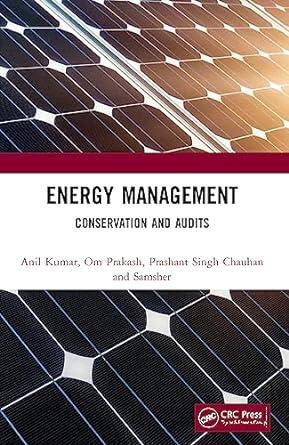Question
Marcus Company assembles products from a group of interconnecting parts. Some of the parts are produced by the company, and some are purchased from outside
Marcus Company assembles products from a group of interconnecting parts. Some of the parts are produced by the company, and some are purchased from outside vendors. The vendor for Part X has just increased its price by 35 percent, to $10 per unit for the first 5,000 units and $9 per additional unit ordered each year. The company uses 7,500 units of Part X each year. Unit costs if the company makes the part are:
Direct materials $3.50
Direct labor 1.75
Variable manufacturing overhead 4.25
Variable selling costs for the assembled product 3.75
Should the company continue to purchase the part, or should it begin making the part?
2. Dental Associates is currently operating at less than capacity. The company thinks it could cut costs by outsourcing dental cleaning to an independent dental hygienist for $50 per cleaning. Currently, a dental hygienist is employed for $30 an hour. A dental cleaning usually takes one hour to perform and consumes $10 of dental supplies, $8 of variable overhead, and $16 of fixed overhead. Should Dental Associates, Inc., continue to perform dental cleanings, or should it begin to outsource them?
3. Hadley Company has received a special order for Product R3P at a selling price of $20 per unit. This order is over and above normal production, and budgeted production and sales targets for the year have already been exceeded. Capacity exists to satisfy the special order. No selling costs will be incurred in connection with this order. Unit cost to manufacture and sell Product R3P are as follows: direct materials, $7.60; direct labor $3.75; variable manufacturing overhead, $9.25; fixed manufacturing costs, $4.85; variable selling costs, $2.75; and fixed general and administrative costs, $6.75. Should Hadley Company accept the order?
4. Smith Accounting Services is considering a special order that is received from one of its corporate clients. The special order calls for Smith to prepare the individual tax returns of the corporations four largest shareholders. The company has idle capacity that could be used to complete the special order. The following data have been gathered about the preparation of individual tax returns:
Materials cost per page $ 1
Average hourly labor rate $60
Standard hours per return 4
Standard pages per return 10
Variable overhead cost per page $.50
Fixed overhead cost per page $.50
Smith Accounting Services would be satisfied with a $40 gross profit per return. Compute the minimum bid price for the entire order.
5. Perez Company is evaluating its two divisions, West Division and East Division. Data for the West Division include sales of $530,000, variable costs of $290,000, and fixed costs of $260,000, 50 percent of which are traceable to the division. East Divisions efforts for the same period include sales of $610,000, variable costs of $340,000, and fixed costs of $290,000, 60 percent of which are traceable to the division. Should either division be considered for elimination?
6. Snow, Inc., makes three kinds of snowboards, but it has a limited number of machine hours available to make them. Product line data are as follows:
Wood Plastic Graphite
Machine hours per unit 1.25 1.0 1.5
Selling price per unit $100 $120 $200
Variable manufacturing cost per unit 45 50 100
Variable selling cost per unit 15 26 36
In what order should the snowboard product lines be produced?
7. Gomez Industries produces three products from a single operation. Product A sells for $3 per unit, Product B for $6 per unit, and Product C for $9 per unit. When B is processed further, there are additional unit costs of $3, and its new selling price is $10 per unit. Each product is allocated $2 of joint cost from the initial production operation. Should Product B be processed further, or should it be sold at the end of the initial operation?
8. Richard V. meats, in an attempt to provide superb customer service, is considering the expansion of its product offerings from whole hams and turkeys to complete ham and turkey dinners. Each dinner would include a carved ham or turkey, two sides dishes, and six rolls or cornbread. The accountant for Richard V. Meats has compiled the following relevant information:
Sales Revenue, No Sales Revenue If Additional
Product Additional Service Processed Further Processing Costs
Ham $30 $50 $15
Turkey 20 35 15
A cooked, uncarved ham costs Richard V. Meats $20 to produce. A cooked, uncarved turkey costs $15 to prepare. Use incremental analysis to determine which products Richard V. Meats should offer.
Step by Step Solution
There are 3 Steps involved in it
Step: 1

Get Instant Access to Expert-Tailored Solutions
See step-by-step solutions with expert insights and AI powered tools for academic success
Step: 2

Step: 3

Ace Your Homework with AI
Get the answers you need in no time with our AI-driven, step-by-step assistance
Get Started


